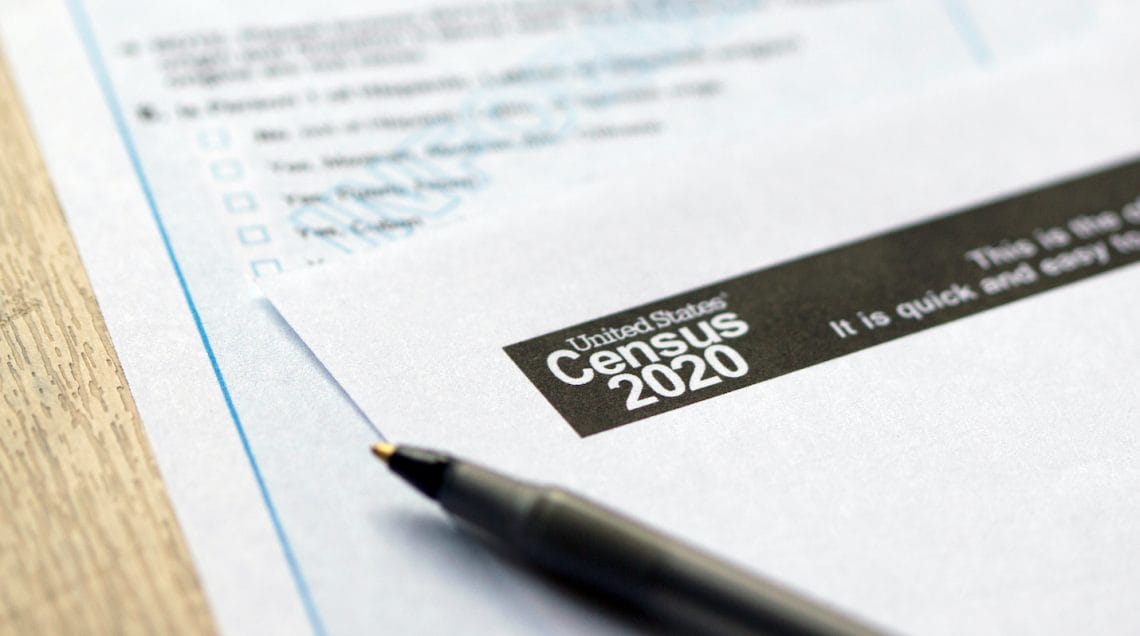Each decade, the government makes an effort to count every person living in the United States. The census is absolutely essential to making government programs and services work as effectively as possible. For example, census data are used to determine the amount of federal funding for hundreds of programs – from Medicaid and student loans to public housing, social services, and school meals. These data are also used to redraw legislative districts and assign the number of congressional representatives in each state.
Despite the economic benefits and political ramifications of the census, many people, particularly non-citizens, people living on low-incomes, people of color, and children under five, go uncounted, leaving critical programs that people rely on underfunded. Over 10% of New Yorkers polled last year said their households would possibly or definitely not participate in the 2020 census. And national data from 2010 show that even among Americans who responded to a survey saying they were extremely or very likely to fill out the census, only 60-70% actually did so.
Local organizations across the country are working to maximize participation. New York City is investing millions in “census ambassadors” and funding community-based organizations to “get out the count” (GOTC). Many of these organizations are working on the frontlines to make sure all New Yorkers are willing and able to complete the census questionnaire when it becomes available online, over the phone, and through the mail in March. Because ensuring maximum participation requires encouraging people to decide to fill out the census and then follow through, behavioral science offers important insights into why people might not participate and innovative strategies to encourage them to do so. With support from ideas42’s Behavioral Design Center (BDC), NYC non-profits are deploying behavioral science insights and design strategies to enhance the impact of their census outreach efforts.
The BDC recently held a workshop co-sponsored by United Neighborhood Houses (UNH) and New York Counts 2020 where we brainstormed with representatives of non-profit organizations innovative ways to apply behavioral approaches to their GOTC communications and outreach. Our discussions focused on two key decision points for New Yorkers: first setting an intention to participate in the census, and then following through on that intention by actually filling out the census form – either online, over the phone, or on paper.
Setting an intention to participate in the census
There are many reasons somebody might not want to fill out the census. Our workshop participants highlighted that the most common understanding of the census is that it is a government tool to count or track people. As such, many people may not see any benefits to themselves of participating, or they may fear negative ramifications.
To shift those models and make it more likely that New Yorkers will decide to be counted, workshop participants discussed how to spotlight the concrete benefits of census-determined federal funding for specific target communities or individuals (e.g. children, college students, the elderly), in conjunction with the potential for loss (a significant motivator to act). For instance, for every uncounted New Yorker, it is estimated that New York State communities will lose $4,000 per year in funding for many federally funded programs.
Following through on participation
We know that intentions do not always result in action. Even when people consciously decide to fill out the census, limited attention and hassle factors in the environment may deter them from actually doing so.
In the workshop we discussed research-based strategies to capture attention and help people follow through. These strategies included conducting outreach through appropriate channels – such as e-mail, text message, and direct calling (in multiple languages); tailoring messages by using compelling visuals and slogans that resonate with the target community; and delivering information at times when people are most likely to act. Some attendees suggested creative methods to dispel ambiguity about the process by creating census story-time books for parents to read to their children, or hosting tailored census 101 workshops in neighborhoods throughout the city. Strategies to reduce hassles included meeting people at places where they already go in the course of their regular day-to-day activities, like community centers, schools and classrooms, medical office waiting rooms, and churches, as well as providing in-person support for people filling out the form.
Attendees also noted the importance of deploying appropriate messengers to encourage census participation, in order to foster trust based on familiarity, credibility, and/or shared identity. Some organizations plan to leverage social norms as motivators through “I Count” buttons, stickers, and social media posts to highlight participation by other community members. Attendees left the workshop with the goal of generating “social glow” around census participation by turning it into a more public, positive community activity, with emphasis on the specific benefits it will generate for New Yorkers.
We are excited by these ideas to incorporate behavioral insights into efforts to get out to count across the city, and look forward to seeing them come to fruition. The BDC is continuing to support non-profits in applying behavioral approaches to enhance their outreach in preparation for the 2020 Census launch. We welcome those working to mobilize the count in NYC to join us at our next free workshop, “Behavioral Design for Census Outreach”, on Tuesday, March 10th at FPWA.
Interested in other ways to apply behavioral science insights and strategies to improve your non-profit’s service delivery or civic engagement efforts? Sign up for our listserv or an office hour, or email us at laura@ideas42.org to learn more.



